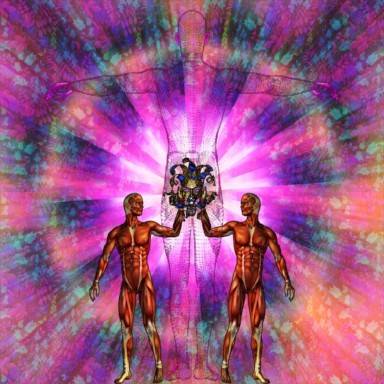Abstract or non-representational art can be found in all cultures, and even appears in prehistoric cave paintings. The form that we are most familiar with today is Modern Abstract Art, which began in the early 1900s. It evolved from many influences, but it is clear that the Impressionists set the scene for its arrival. Using experimental painting techniques, the Impressionists began to emphasize the act of painting over the subject matter. The Russian artist Wassily Kandinsky (1866-1944) brought this idea to fruition when he abandoned representation altogether. His paintings progressed from representational landscapes, to dark lines with patches of colour, to complex arrangements of colourful shapes.
Kandinsky is generally recognized as the first Modern Abstract artist. His two series of paintings, 'Improvisations' and 'Compositions,' produced between 1910 and 1914, charted his movement to total abstraction. He developed and promoted his ideas through a group of like-minded artists, the Blue Rider group (Der Blaue Reiter).
Many later artists were influenced by Kandinsky, including Picasso, Braque and Mondrian, to name a few. Although he was recognised for his ground-breaking contribution to Modern Abstract Art, Kandinsky downplayed using such terms, writing, 'it is impossible to make clear the aim of a work of art by means of words'.
Kandinsky is generally recognized as the first Modern Abstract artist. His two series of paintings, 'Improvisations' and 'Compositions,' produced between 1910 and 1914, charted his movement to total abstraction. He developed and promoted his ideas through a group of like-minded artists, the Blue Rider group (Der Blaue Reiter).
Many later artists were influenced by Kandinsky, including Picasso, Braque and Mondrian, to name a few. Although he was recognised for his ground-breaking contribution to Modern Abstract Art, Kandinsky downplayed using such terms, writing, 'it is impossible to make clear the aim of a work of art by means of words'.
